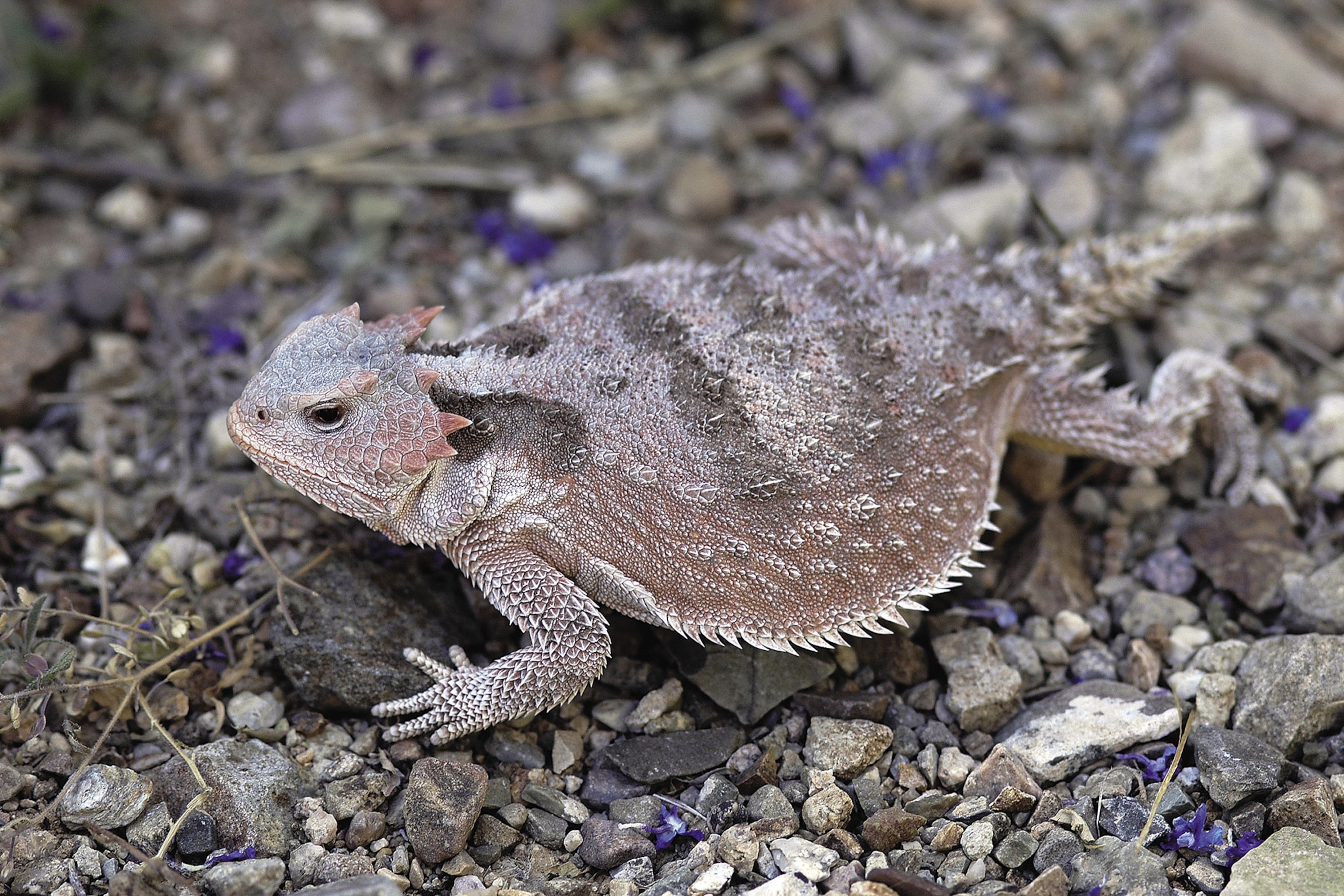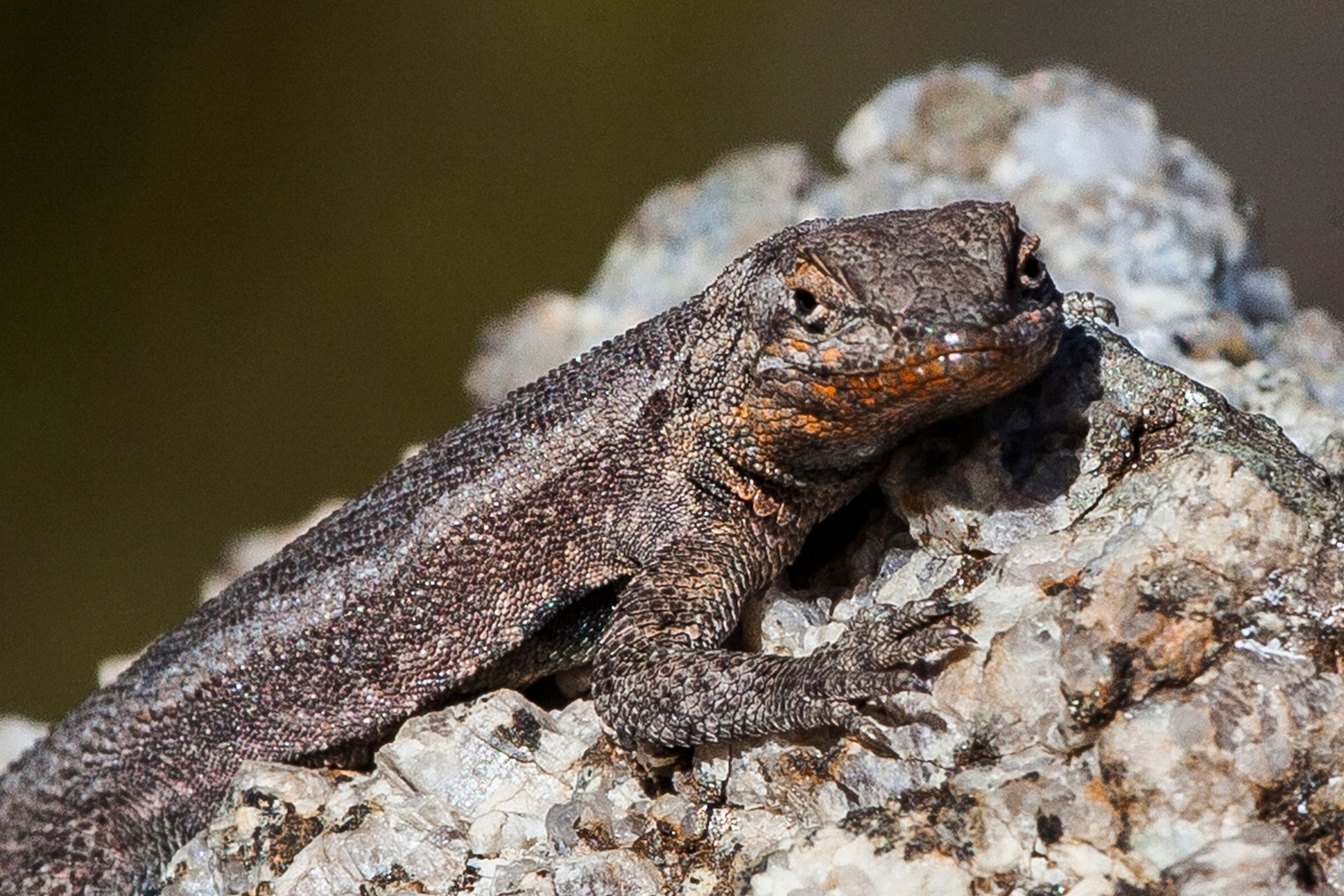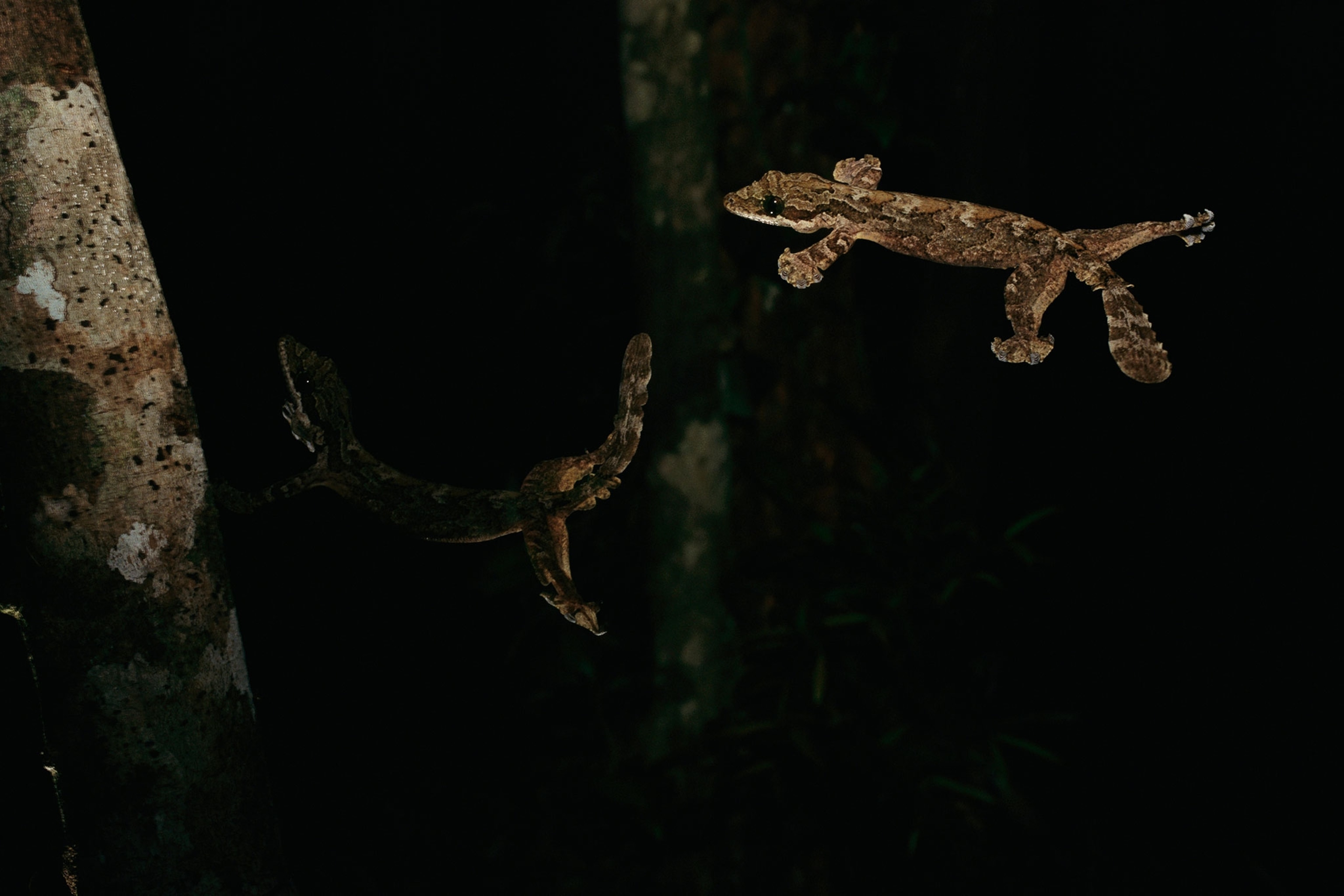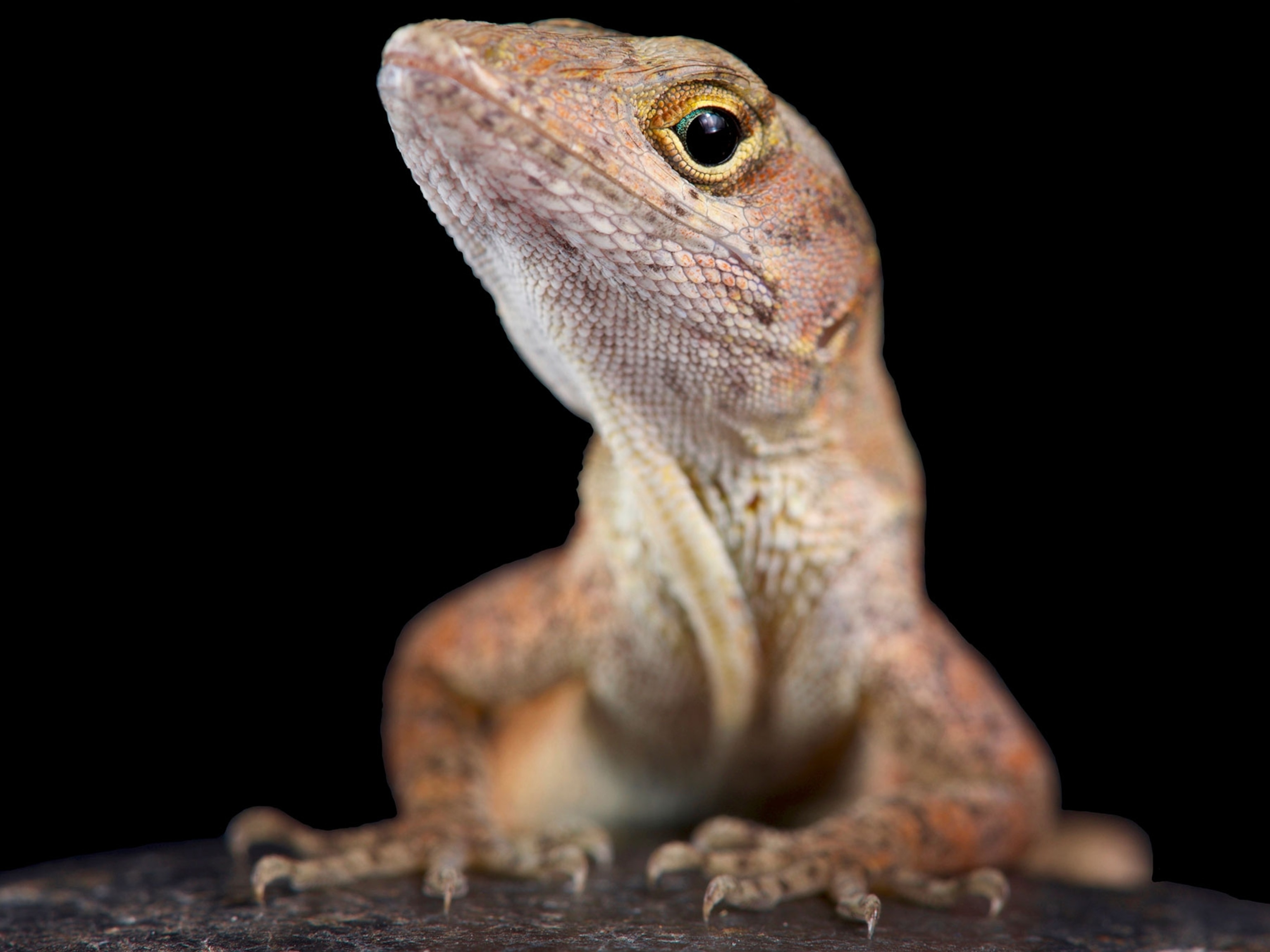See the Lizard That Shoots Blood From Its Eyes
From flying geckos to "two-headed" skinks, lizards are a funky lot.
Lizards sometimes appear to be artifacts from bygone world, but many are more dynamic we may think. This week, we take a look at some reptiles that are doting parents, bloody brilliant, and just plain adorable.
Solomon Island Skink
As cold-blooded creatures, reptiles' body temperature is dependent on their environment. That’s why you might see a Florida alligator sunning itself like a tourist.
(Texas Horned Lizard, Once Common, Now Must Be Captive Bred)

Most of us think of reptiles as cold in demeanor, too—aloof and solitary. But the Solomon Island skink “lives in little social groups, which is really, really rare for lizards,” says Nassima Bouzid, a Ph.D. candidate at the University of Washington.
Most reptiles lay many eggs and abandon them, but these tree-dwelling skinks give birth to live young and care for them as long as “six months to a year—exactly what you would think would happen with a mammal,” Bouzid says.
They’re also the largest skinks in the world—nearly three feet long, tail included.
Horned Lizard
Talk about blood-shot eyes. When threatened, the horned lizard of the southwestern U.S. and Mexico can shoot arcs of blood from their eye sockets. (Read about an overachieving lizard that grew three tails.)
Ideally, the lizards squirt when they're in the jaws of a predator—such as a kit fox—to ensure they hit their target, says herpetologist Wade Sherbrooke, former director of the Southwest Research Station of the American Museum of Natural History.

These sanguinary sprinklers use this defense only on members of the dog and cat families, like coyotes or bobcats, but not on birds or reptiles. So why would a little blood bother a hungry carnivore?
(How Lizard Genitalia Became a Black Market Craze)
Sherbrooke likens it to having a little Worcestershire sauce on a steak, versus a glass of it. The concentrated blood, not mixed with other things, would be off-putting.
Side-Blotched Lizard
Male side-blotched lizards, native to western North America and Mexico, engage in an evolutionary game of rock-paper-scissors, in which one of three color types is constantly beating out the others.

Of the three colors, orange-throated males are larger and more aggressive, giving them domain over more territory and harems of females.
Blue-throated males work together to defend smaller territories, guarding their few mates closely. Yellow males, called “sneakers,” creep into orange male territory and mate with unguarded females. (Read about the best liars in the animal kingdom.)
A 2010 study showed that the three colors have been around for millions of years, with the dominant color changing every few years. If a color type fades out, the yellow lizards are the first to go.
Flying Geckos
The six species of these living Pokémon don’t actually fly, but glide through the treetops thanks to skin flaps on their body, limbs, and webbed toes.

These well-camouflaged lizards, found in Southeast Asia, also have a cartoonish look: The webbed feet on this Kul’s flying gecko are shaped exactly like Lisa Simpson.
Shingleback Skink
The shingleback skink may not look like it knows if it's coming or going, but having a similar-looking head and tail is a mighty helpful defense mechanism. (Read about the art of deception in National Geographic magazine.)

“Predators go for the head because that’s how you disable prey,” says Sherbrooke—so having what looks like two can confuse predators.
Not only that, but if "somebody bites your ass it’s a lot better than if they bite your head,” Sherbrooke says.
And there’s your weekend wisdom.
Have a question about the weird and wild world? Tweet me or find me on Facebook. Weird Animal Question of the Week answers your questions every Saturday.





